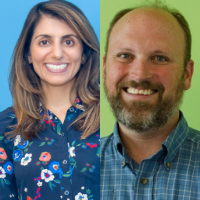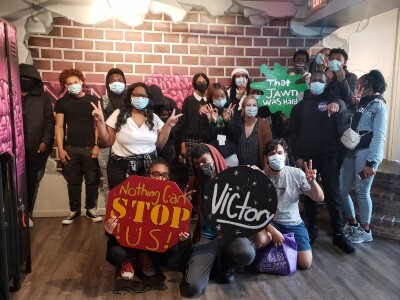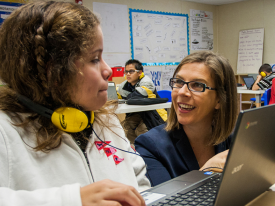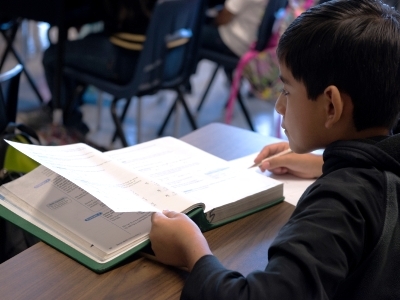Student-Led IEPs: Realizing the Promise of the Individuals with Disabilities in Education Act
Topics
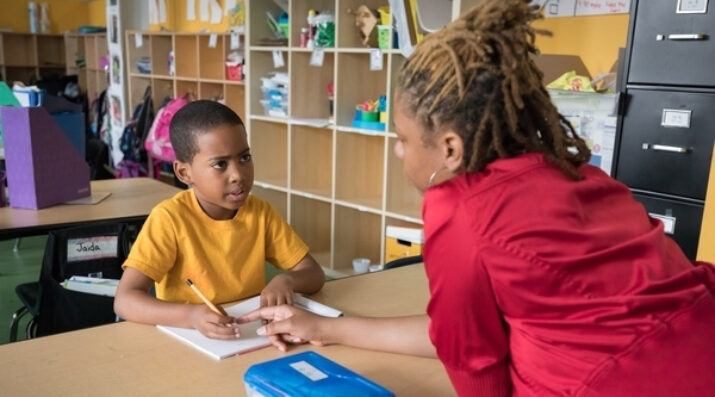
Together, educators are doing the reimagining and reinvention work necessary to make true educational equity possible. Student-centered learning advances equity when it values social and emotional growth alongside academic achievement, takes a cultural lens on strengths and competencies, and equips students with the power and skills to address injustice in their schools and communities.
In student-led IEPs, students are active participants in creating their learning plan, providing opportunities to deepen their understanding of themselves.
Millions of students have gone back to school, but how are their schools serving them? November will bring the 45th anniversary of the Individuals with Disabilities in Education Act (IDEA), the federal law that ensures states and school districts provide a free appropriate public education to all children with disabilities. As we celebrate this milestone of the landmark law that is IDEA, we can’t help but think that we do not have much to celebrate. Have public schools become more equitable in serving students with disabilities?
The sobering reality is that schools have yet to actualize the spirit of IDEA. Schools were traditionally designed to meet the needs of the masses, not the individual, and unfortunately primarily still function in this way. Curriculums and pacing guides are based on the perception of what the average student needs. By design, this does not work for all students. Some students will fall outside of what is typical. There will be students who are the exception. Being the exception can leave students with disabilities feeling hurt, distressed, or like they don’t belong. Over time, this can make students think that there is something wrong with them. They get the message that school is not for them. So while IDEA requires schools to support students and provide access to education alongside their non-disabled peers, students with disabilities continue to be underserved.
The traditional development of an IEP requires the student’s team, a group of well-intentioned adults, to create a learning plan for the student. While this process can check the necessary boxes, there is often something essential missing. The student.
One major innovation that IDEA brought was the creation of Individualized Education Plans (IEP) for any student that qualified for special education services. The traditional development of an IEP requires the student’s team, a group of well-intentioned adults, to create a learning plan for the student. While this process can check the necessary boxes, there is often something essential missing: The student. In this traditional format, the most important stakeholder isn’t included. A student-led IEP provides an opportunity to correct this.
In a student-led IEP, the student is the driver and is an active participant in developing and achieving their plan. It provides them with the opportunity to explore and understand their strengths and areas of challenge and develop advocacy skills. By engaging students in conversation and giving them access to their IEPs, space is created for students to uncover what often feels like a mystery.
Student-led IEPs provide the infrastructure to include rather than exclude students. While traditional pacing guides set the course and speed for a student’s learning experience, student-led IEPs engage students in creating achievable and attainable goals and require all stakeholders to assess progress toward the plan regularly. It requires teachers to share data and information with students and engage in meaningful conversations about what is working and what is not.
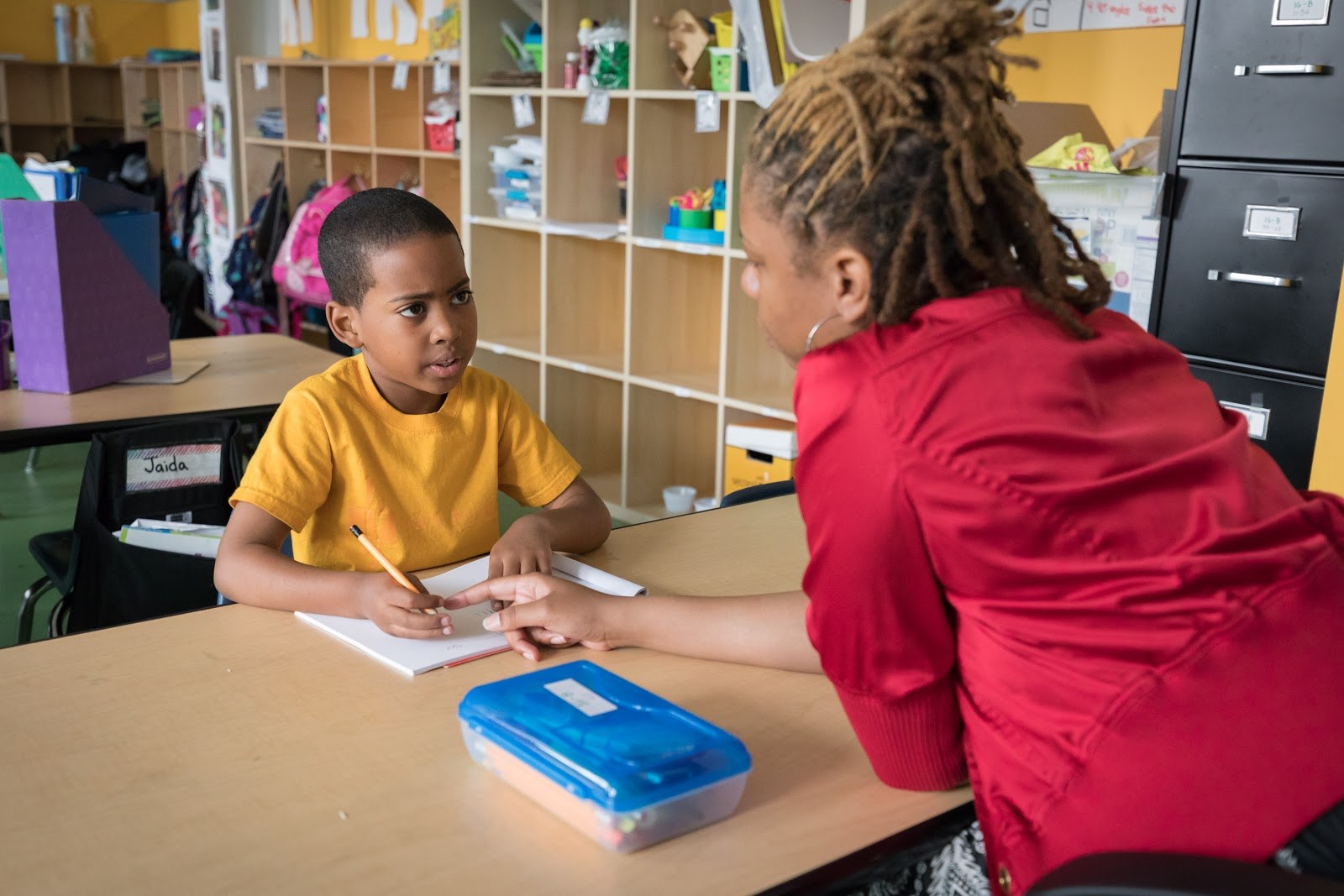
Courtesy of Two Rivers Public Charter School
The power in student-led IEPs is not found in just conducting an IEP meeting with the student present. The emphasis is on providing the tools and spaces for students to engage in a continual cycle of reflection, celebration, and adjustment. Over time, this practice provides students with more clarity, control, and agency with their learning. We can’t think of a better way to make students college and career ready.
Sasha Clayton, Two Rivers’ middle school counselor, recognizes this power as he works with students from the time they enter middle school until they transition into high schools. Through this work, he sees students brighten with an “Aha” moment as they begin to understand their disability and make real progress on their goals. Some educators and parents shy away from direct conversations about disabilities with students. However, Sasha has found that moving past this taboo is freeing to students as they deepen their understanding of themselves. He utilizes a simple reflection sentence stem, which asks students to identify first “I used to believe…” and then follows it with “but now I know...” Consistently, Sasha has found that the student-led IEP process has opened up doors for students to deepen their understanding of themselves and the learning process.
While Sasha’s work has primarily been with our middle school students, we have found that it is never too early to start the student-led IEP process. Beginning student-led IEPs as soon as students are identified for special education services provides students with opportunities to build the self-awareness skills that will serve them throughout their education and life. So we have begun student-led IEPs with kindergartners introducing them to how to think about their learning styles, their disability, and how to think about concrete goals.
Whether schools have welcomed students back with masks or through the computer screen, we know that because of the COVID pandemic, this school year is unlike any other. Regardless of your role in school: student, parent, teacher, or school leader, school is different. Let’s genuinely embrace the shift to realizing the promise of the Individuals with Disabilities in Education Act by giving all of our exceptional learners access to the tools to help them succeed. Student-led IEPs are an essential component of making that happen.

